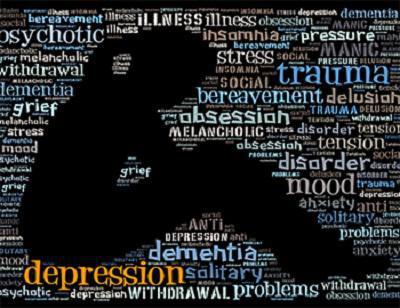
It is possible for depression to have an impact on a person’s feelings, thoughts, and behavior. Depression is often characterized by melancholy and indifference toward once-enjoyed activities, which can, in turn, cause a few mental and physical problems.
What are the different types of depression?
Depression symptoms can range in severity from very severe to those that are very incapacitating. Major depression, sometimes referred to as major depressive disorder, clinical depression, or unipolar depression, is one of the most prevalent types. Melancholic or psychotic depression can manifest in this manner.
Slow movements are one of the physical signs of melancholic sadness. In contrast to psychotic depression, when the patient may also suffer hallucinations or delusions, this condition is not psychotic in nature.
Although the symptoms of the dysthymic disorder are not as severe as those of major depression, they are similar. The signs and symptoms can, however, last longer than those of severe depression, frequently for years. The seasonal variation in a depression known as a seasonal affective disorder, on the other hand, is most likely brought on by the varying levels of sunshine that people are exposed to throughout the year.
Manic depression, often classified as bipolar disorder because the patient would have periods of depression and periods of normal mood in between bouts, is now generally recognized as being separate from depression. Mania, on the other hand, occurs during episodes of manic depression and is characterized by feeling happy, having plenty of energy, and speaking fast.
What are the Symptoms and diagnoses?
People’s lives can be severely impacted by depression. Many people deal with emotional issues, which affect their capacity to conduct themselves in a healthy manner at home and at work. One in six people is predicted to suffer it at some point in their lives, and it is anticipated to afflict one in 16 adults annually. According to some estimates, one in three women will go through a depressive episode at some point in their lives. Women are also more prone than males to experience depression.
Feelings of sorrow, a downcast demeanor, and losing interest in previously loved activities are the most typical signs of depression. Suicidal thoughts, difficulties focusing and making decisions, feelings of shame or worthlessness, and other symptoms may also accompany these.
Some of the other signs of depression are easier to see physically. Weight gain or loss that is unrelated to dieting might result from depression, as can changes in appetite. It may also be linked to irregular sleeping patterns, difficulties falling asleep, and subsequent oversleeping, as well as increased general weariness and energy loss. Depression can occasionally be identified by changes in behavior, such as sluggish motions and speech, or by an increase in minor bodily actions like pacing and hand wringing.
When depressive symptoms last for two weeks or more, a diagnosis of depression is made. Before a diagnosis of depression is made, other medical diseases such as thyroid issues, brain tumors, and vitamin deficiencies should be tested out since they occasionally induce depressive symptoms.
What causes depression?
The precise reasons for depression are not well known, even though it is a common diagnosis among the populace. It is most frequently brought on by a confluence of short- and long-term influences. Recent life events are more likely to operate as a trigger in these situations for a person who is already at risk.
The most frequent cause of depression is ongoing troubles in life. For instance, being unemployed for a prolonged length of time, being in an unhealthy or abusive relationship, living alone for an extended amount of time, and experiencing stress over an extended period are some of these.
When coupled with these enduring obstacles in life, sudden occurrences might precipitate clinical depression, such as losing a job or getting into an accident. According to certain research, 80% of depression diagnoses are identified after a significant life event.
Depression risk can be increased by a variety of personal circumstances. There may be a higher genetic propensity for depression in some families due to a history of the condition. However, negative, or stressful life events are also frequent in these situations for depression to occur. These can occasionally overlap; for instance, drug or alcohol abuse can cause or result from depression, and both conditions can run in families.
Certain personality qualities are among the personal factors that might raise the risk of depression. This is particularly true for those whose personalities are linked to excessive concern, low self-esteem, perfectionism, sensitivity to criticism, and negative and self-critical behavior.
Life conditions that result in high amounts of stress are another individual element that might cause depression. This frequently occurs in significant medical problems that are accompanied by a great deal of stress and concern. This is particularly typical for chronically painful illnesses and/or conditions that call for long-term management.
Depression appears to be fundamentally brought on by alterations in the brain. These don’t always have to be “chemical imbalances,” like having too much or too little of a certain molecule in the body. The transmitters serotonin and noradrenaline, on the other hand, are two substances that are frequently linked to depression. These facilitate brain cell communication.
What are the treatments for depression?
The psychological causes of the illness, the biological underpinnings of depression, or a mix of the two may be the focus of treatment. Fortunately, depression is one of the mental illnesses that are easiest to treat. About 80–90% of people with depression will, eventually, benefit from therapy and get respite from the harmful symptoms.
Psychological therapy can assist in controlling emotions and addressing the underlying issues that led to depression. Numerous methods can be used to accomplish this, which is sometimes referred to as psychotherapy. For instance, psychotherapy can be expanded to encompass families and groups of people suffering from related conditions as well as the patient.
Cognitive-behavioral therapy is one type of psychotherapy that focuses on the here and now and finding solutions to the issues the patient is experiencing. The patient may be able to adjust their behavior and thought patterns because of becoming aware of the distorted thinking that is a hallmark of depression. Treatment can last anywhere from a few weeks to much longer depending on the severity of the depression, although it usually lasts a few weeks.
Sometimes, drugs that affect brain chemistry are given. Serotonin and noradrenaline are the focus of many contemporary antidepressants. These often do not establish habits and have no noticeable impact on those who are not depressed.
Antidepressants can begin to work within a week or two after beginning treatment, but occasionally it takes two or three months to notice the full range of effects. After symptoms have improved, it is typically advised to continue taking the drug for six months or more. After using the medicine for a few weeks, if there has been little to no improvement, the amount or kind of drug may need to be changed.
